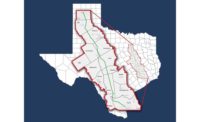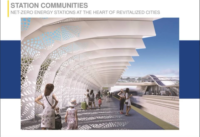
Buoyed by court rulings and a dedicated funding source from the state's cap-and-trade program, administrators of California's ambitious high-speed-rail program are moving forward with initial construction and renewed optimism.
The first construction package for 29 miles in the Central Valley will accelerate in activity over the next few months, and a design-build contract for 65 miles, worth up to $2 billion, will be awarded early next year, said Jeff Morales, CEO of the California High-Speed Rail Authority. "We have $3 billion under contract in the Central Valley," he told attendees of the US High Speed Rail Association at a conference held on Dec. 2-5 in Los Angeles.
In October, the California Supreme Court threw out an appeal of a case brought by opponents of the state's $68- billion project. This month, the U.S. Surface Transportation Board also ruled in favor of the project, rejecting lawsuits that challenged the project under the California Environmental Quality Act.
Above all, Gov. Jerry Brown's plan to dedicate $250 million a year from cap-and-trade revenue to the project was a "game-changer" that will allow the authority to advance multiple construction segments concurrently, said Morales. Work will include regional transit links to high-speed rail, such as electrifying the commuter system Caltrain.
"What a difference nine months make," said Thea Selby, a board member of the California High-Speed Rail Authority, noting the developments in the project's favor. "We have 400 contractors on [the first contract], with 33 small business owners."
Morales said that, in the Central Valley, an agricultural hub hard-hit by the state's drought, unemployment is as high as 35%. Work related to high-speed rail will create 20,000 jobs a year for five years, with 30% to go to small businesses, he said.
Another speaker, Armin Kick, director of business development for high-speed rail with Siemens Industry Inc., compared the planned San Francisco-Los Angeles route to the route between Madrid and Barcelona. He noted that high-speed-rail trips of around three hours—like the Madrid-Barcelona line—become equitable in market share with short-haul flights. Moreover, in Europe, "airports are eager to get high-speed rail into their terminals," said Kick. "They realize that short haul clogs up the slots that could be used for more profitable, long-distance flights." He cited the example of the airline Lufthansa, which has a code share with high-speed rail on Cologne, Germany, flights.
This month, a Dragados-Flatiron-Shimmick joint venture was named the winner of the design-build contract for the next 65 miles. Charles Guess, western market leader with Arcadis, the construction-program manager for the segment, says the work will include 50 miles of at-grade track, 30 grade separations and 9.5 miles of viaduct. Noting the synergy of this year's developments with the conference, he says, "High-speed rail is the new, exciting kid in the room."




















Post a comment to this article
Report Abusive Comment